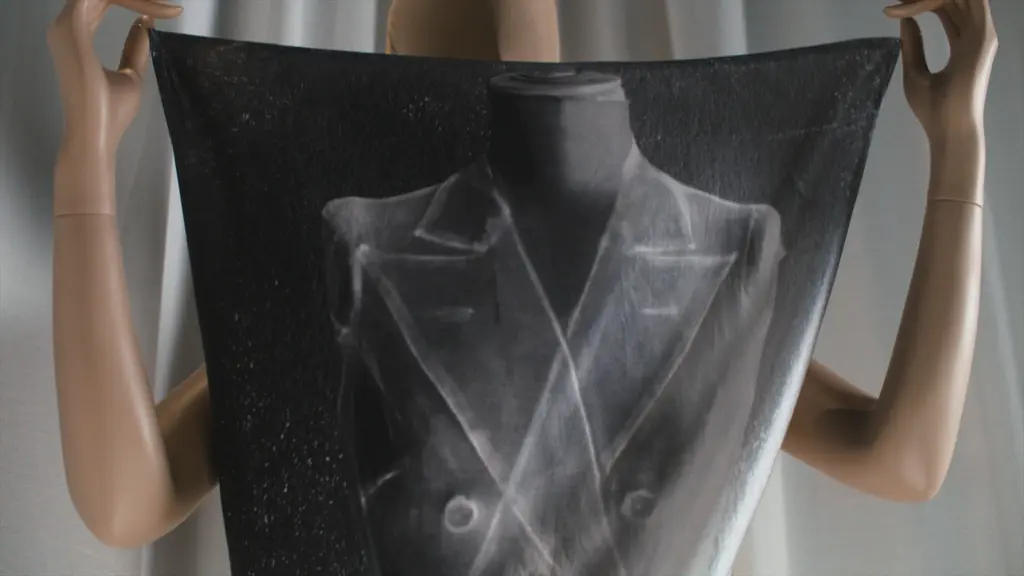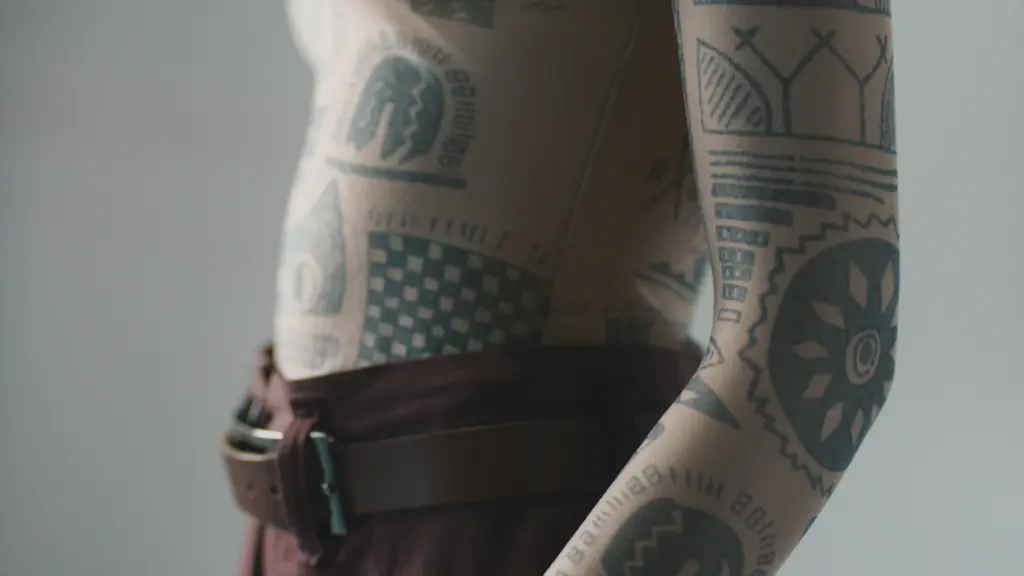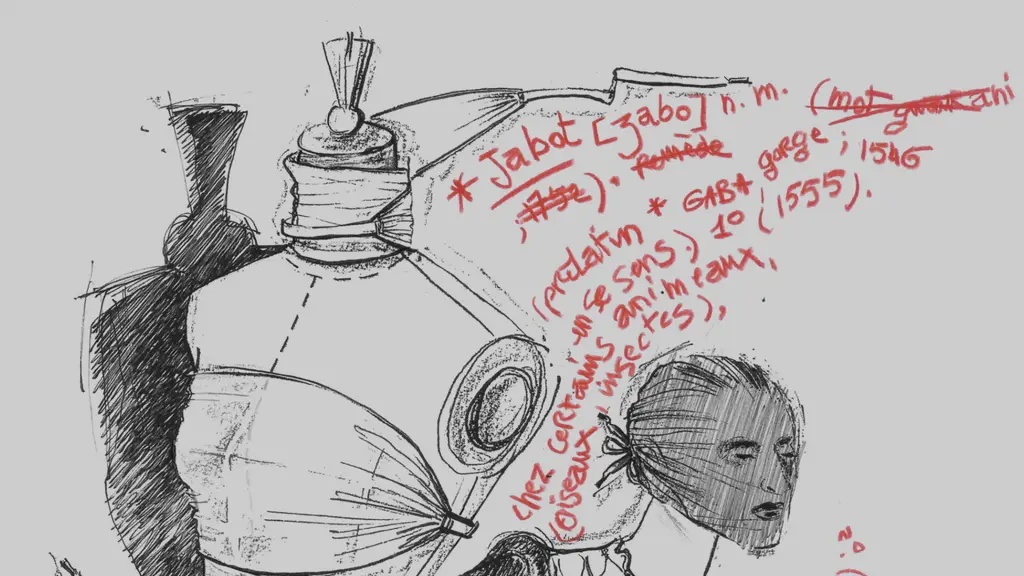Martin Margiela, unmasked

SS09 exhibited at Palais Galliera Paris
Director Reiner Holzemer succeeded where everyone else failed, by tracking down the illusive Belgian designer for his all-encompassing documentary Martin Margiela: In His Own Words.
Style
Words: Rachel Hodin
For the duration of his 20-year term at the helm of his eponymous brand Maison Martin Margiela, Martin Margiela, the Belgian fashion icon, remained staunchly committed to his privacy. He judiciously avoided the press, refusing to do interviews, be photographed, or even come out and take the customary bow at the end of his runway shows.
Eleven years since his formal departure from Maison Martin Margiela, it has taken the sensitive direction of director Reiner Holzemer to draw Margiela out from his shell. This past Friday’s premiere of Martin Margiela: In His Own Words, at the DOC NYC film festival, marks the first time Margiela’s voice has ever been heard in such a public forum.
This quasi-unveiling of Margiela, the man, is at once wholly unexpected and a long time coming. Ever since his first collection, critics and fans – without any real knowledge of the man behind the seams – struggled to understand his subversive designs. It’s human instinct to favor the palatable and the tidied-up, to take comfort in proven, unambiguous truths. To wit, we need each collection to come with a stated “source of inspiration”; we need the designer to come out and take a bow at the end. The idea that you could be such a pivotal figure in fashion history and simultaneously opt out of the external validation that invariably comes with it is hard to comprehend.
When everyone is trying to out-hot everyone else, not showing your face is the ultimate flex. The irony is that Margiela’s anonymity had nothing to do with trying to foster an elusive or intriguing aura. For him, it was a necessity, a means of survival. Which is exactly what Holzemer managed to so brilliantly convey: that, above all else, Martin Margiela is human.
Evidently, he battled (and continues to battle) the same inner demons that haunt us all, his predecessors and contemporaries included. He was acutely aware of how stifling being in the public eye could be and knew that he needed anonymity to thrive. Margiela “did us a favor,” as renowned critic Cathy Horyn says in the film; had he not remained anonymity during his years as a designer, it’s very likely that he never would have created the body of work that we all know and love him for today.
In presenting such trailblazing designs to the public without any context, he “made us think more,” Horyn added. “Made us be more creative.” He forced us to do the legwork, to think outside the box – which we could use more of today.

Silhouette of the SS09 collection exhibited at Palais Galliera

The Tattoo Top, SS89 collection

Martin Margiela sketch of the Jabot
Do you remember the first time you learned who Martin Margiela is?
Reiner Holzemer: Not really, to be honest. When I did the Dries [van Noten] movie, I was shooting in Antwerp and [found] out the details of the Antwerp Six and the Academy generation and there was always that name Margiela that was something special, but to be honest I never knew his work.
But the first time I really encountered his work was in 2017 when I saw an exhibition in Antwerp about the work he did for Hermès, and I was really excited to see that. In the same exhibition there were only a few pieces of the Maison Martin Margiela and they were quite irritating. The veiled faces, transparent garments, I thought, “Huh? How does that fit together with this?” And I read a little bit about it, that [he did] these veiled faces [because] he wanted people to concentrate on the garments, and I really like that idea. Especially today, faces are so important, everybody is doing selfies, everybody wants to have a selfie with a famous person posted on the internet immediately. And then there’s this guy…it really caused my interest and I tried to get more information about it and as I was looking for another subject to follow the Dries documentary, I thought this would be the right guy. But many people told me, “Go on dreaming, because you will never have a chance to see him or speak to him.”

I’m sure that many people before you had tried to make documentaries about Martin Margiela and failed. Why were you able to do it? Did you have certain connections?
No not at all. We should ask Martin why did he do it.
It wasn’t so easy to get in touch with him. We – me and my co-producer, Aminata Sambe – went through three people I think. The first one was Olivier Saillard, who was working with Martin on the Galleria exhibition. And he passed on my [contact information] to Martin, but there was never a reaction. Then there was another woman who saw the Dries movie and she was a long time ago a model for Martin. She thought the Dries movie was made so sensitively and that we were trustful people and she wrote to him that if ever he wanted to make a movie, he should meet us. And then I think luck also played a big role. For the first time 10 years after [Martin] ended his career there were 110 outfits of all the women collections he did for Maison Martin Margiela, and he thought it would be nice if someone would shoot or film that. So that was his interest in meeting me. But he never thought about making a documentary. So, one day there came an answer from Martin Margiela, and he said, Ok we can meet. We met in January 2018…He was always asking me, Did you ever make a movie about an exhibition? And I said, No no no. What I would love to do is more a portrait or documentary about you.
But – and this experience I’ve had many times – once people see how I work, how I can, if it’s necessary, shoot totally alone, I can operate the camera myself, do the sound, and create a very intimate situation. This is very important for people like Martin. And so I [told Martin] I’m open to do anything, and four days later we started shooting in the Galleria basement because there were all those garments for the exhibition there. And then, you know… he sees how quietly I can work, and I see how he reacts, [if] I can ask him a question. Because he hated interviews, he once said – he never did interviews, he even hated the word, so I avoided it. You see how the other guy thinks and feels and works in the end. And then one day it was possible that we could talk about a documentary.
Do you know if this is the first instance that he ever spoke on camera?
Yes.
That’s wild.
Not even radio or anything. I think it’s hard to find even written interviews. There’s no interview after [he stopped designing] and I think maybe there is an interview in the first or second year when he [first started working].
You said that, because of your style of shooting, you are able to create an intimate atmosphere that made Martin more comfortable. Was there anything in particular that you did or had to do to sort of gain his trust?
For him, many things were important. First of all, when you do a project like this, there is also money involved – not for him, but you need funds and stuff. So we made a contract that was not like between a director and protagonist – he wanted to have influence on the movie from the very beginning. [Rather,] it was kind of a co-authorship, with the main part on my side, and he has a minor percentage. That was very important for him because he could be sure that he has an influence on the movie.
We knew we couldn’t shoot his face, so we needed some objects – that was important to him – something in his hands, because the hands we can shoot. For him it was very important that he knew when the camera was rolling. And he loves to talk while he has something in his hand.
He seems like such a genuine person – did it make him uncomfortable to sort of reenact his past?
In the beginning he was very uncomfortable, he didn’t even want to talk about anything. Or [if he did want] to talk, he didn’t want his voice to be used. Not for anonymity reasons, but because he didn’t like his voice. He says, “If I want to enjoy the movie, we should not use my voice because I don’t like it.” So it took some time to convince him that we can use it in the end. I always said, “Let’s tape it, and if you don’t like it in the end, then we find another alternative.” I’m very pragmatic in many ways and I wanted him to feel comfortable – that was my most important goal to achieve because I didn’t want to lose him.
[When] we went through his life and all of that, there were periods he wanted to avoid, but then we discussed and [decided] it would be necessary to talk about this, so he did it. At the beginning it was always easier for him to have something in his hands or on the table. As the movie moves on, there are less and less pieces in his hand.
I came up with the idea of writing [the letter that he wrote to his team], [which] he did in the exhibition also. And then he said, “Oh that’s a beautiful idea…and I think it has the right emotion for the ending and for the movie.” But often, you shoot things and then you throw them in the garbage – I mean, we shot 200 hours, so a lot of stuff ended up in the editing room or in the archives.
I’m sure you have amazing footage you didn’t use.
Yeah, I always said to him that, of course, for a 90-minute movie, you don’t need 200 hours of narration and every detail. [But] I said, “Maybe you will tell that story only one time in your life, so I’m happy and I’m very patient to listen to a lot more than we really need, so go on and feel free to tell everything, maybe we make a book out of it or whatever in the end.” And he liked it that way, I think. Everything was important to make him feel comfortable in the situation. In the studio, it’s an artificial situation. But that’s my job: to make this as normal as possible. [It was] the same with Dries before – [both] were not so happy to have a camera around the whole day.
You want to get a real image of reality… You want to go to the real essence of their work and their life and maybe also the person as close as possible. So many filmmakers, what do they do? They buy a camera which is tiny, very small, to make themselves invisible. I go the opposite way – my camera is big.
You said that there were some things that Martin was hesitant to share. Do you mind expanding on that?
It was not so easy for him to talk about the relation between him and Jenny Meirens, his business partner. And what I heard from other people is this was a tough partnership, that there were a lot of struggles. He thought a lot about how he was going to talk about Jenny in the movie. There’s another movie, We Margiela, that focuses on the Jenny side. And my idea [for this documentary] was not to make an answer to the We Margiela movie. I wanted to make a movie about [Martin] as a designer because this gap was there in the history of fashion, and I wanted to fill that gap. [I did not want to focus on] all the emotional stories around it, but to focus on his ideas and the work as a designer. And of course I’m most interested in emotional things, but to make it more emotional, you need [to show someone’s] face. It was clear that the emotion has some limits in this movie. [laughs]
You still did an incredible job at conveying the emotions. The hands especially were so powerful.
Yeah, thank you. And he has beautiful hands also. Sometimes I would shoot his hands, and then we would use his hands as the expression of emotion – my co-producer liked that idea a lot, but [Martin] didn’t, he didn’t understand it or he didn’t like it, so we used it only once or twice… But, for example, when he has this cork in the beginning, the narration is from a totally different [day], [there were] 20 days in between [the narration and the cork scene]. But I liked it because the cork is such a normal thing, and [Martin] talks in a very normal way about why he wants to be anonymous and that fit together very well. I love the end of the sequence when it turns out to be a necklace – that’s so much Martin: it doesn’t have to be a rich material, it doesn’t have to be jewelry, it’s just a cork.
That’s what I find so interesting. Because Martin is cloaked in this anonymity, so many people see him as this intimidating figure, when really – or, it seems like – it’s almost the opposite.
He’s a very normal guy. Complicated, but very normal. Very nice. You can go out with him to dinner to casual places, no fancy dresses or anything, it’s very very normal.
What was the most surprising thing you learned while filming about Martin?
I mean [the story about his] six-year-old self is really incredible. What was I thinking when I think about myself when I was six years old? Definitely not that I want to become a filmmaker. And then the reasons for his anonymity – was not so much surprising, but nobody really knew the background of it. Some people thought it’s maybe a marketing strategy, to make the whole thing more interesting. But then you hear his opinion about it, and his honest thoughts behind it, and that’s also a surprise in a way. The pressure he put himself under – that was surprising. In the structure of the documentary and in the things that he told us, his memories, each time I thought, so now he reached the success point. And then I’d look into his eyes, and say, “And? And? Are you happy?” [And he’d say], “No, I was depressed.” There were many moments in his life where he acted like that, and that of course was surprising, but it shows you how much he suffered under that pressure he put on himself.
I’d love to know if Martin ever commented on the state of fashion today or anything like that? It’s just so drastically different from how he works. Did he ever make it known that he keeps up with fashion today?
He does, he watches things, he looks at magazines, the internet or whatever. But did he give a comment? Not really. I mean, he’s a little bit angry about all the copies. And he also said once that there are people who do homages on Martin, and he says, “Okay, they should do less homages and focus more on their works and stuff like that.” And another thing was, he did not mention specific names, but he once said that he’s quite optimistic about the new generation, the young generation. He thinks fashion was very commercial in the last years, that it was very much about names and labels and brands and so it was not really interesting for him. But when he looks at the future, he has a positive feeling because he thinks that young people go more into depth with things in general – he’s not a political person, I’m not sure he’s aware of the environment movement, he didn’t say he follows that – but he thinks there’s a new generation that is less commercial. He knows what’s going on, I think, but most of it is boring for him.




